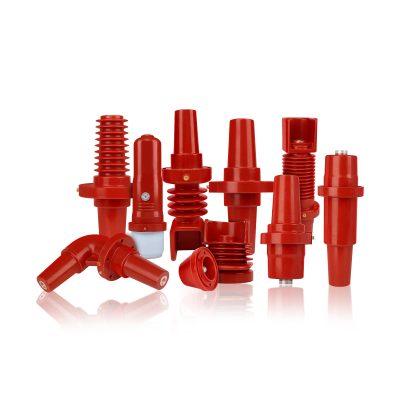Understanding High Voltage Insulation and Its Role in Power Systems

In modern electrical networks, high voltage insulation plays a critical role in ensuring system safety, reliability, and longevity. As power systems operate at increasingly higher voltages, effective insulation becomes essential to prevent electrical breakdowns, protect equipment, and guarantee stable energy transmission.
What Is High Voltage Insulation?
High voltage insulation refers to the materials and design methods used to withstand and isolate electrical potentials in systems operating above 1 kV. The goal is to prevent current leakage and arcing between conductive parts or from conductors to the ground.
Insulation materials must be capable of resisting electrical stress, temperature fluctuations, mechanical pressure, and environmental factors such as humidity and contamination.
Common insulating materials include:
-
Epoxy resin — Excellent mechanical strength and moisture resistance.
-
Ceramics — High dielectric strength and temperature stability.
-
Silicone rubber — Flexible and resistant to weathering.
-
Composite polymers — Lightweight, with superior tracking resistance.
Applications of High Voltage Insulation
High voltage insulation is used in a wide range of power system components, including:
-
Transformers (for core and winding insulation)
-
Switchgear and circuit breakers (for contact separation)
-
Cables and bushings (for transmission and connection points)
-
Substations and insulator strings (for overhead line systems)
At Degatech Electric, we provide advanced switchgear products and medium voltage insulation solutions built with precision-engineered materials to ensure safety and eco-efficiency. Our epoxy resin bushings and vacuum circuit breakers are designed to withstand high stress conditions and ensure consistent dielectric performance.
👉 Visit us at https://chinadegatech.com/ to explore our full product range.
Challenges in High Voltage Insulation
Operating under high voltage means insulation must endure electric field distortion, partial discharge, and thermal aging. Over time, these stresses can deteriorate the material, leading to failures. Therefore, testing and monitoring—such as partial discharge analysis and insulation resistance measurements—are vital to prevent breakdowns.
Additionally, environmental factors like moisture, dust, and chemical pollution can cause surface tracking or corona discharge, reducing insulation life. Using solid insulation systems and vacuum encapsulation techniques helps extend performance in challenging environments.
Future Trends
With increasing emphasis on sustainability, manufacturers are developing eco-friendly insulation technologies that reduce energy losses and eliminate harmful gases such as SF₆. The next generation of solid-insulated switchgear and vacuum interrupters represent a significant step forward in combining performance and environmental responsibility.
At Degatech Electric, we integrate cutting-edge high voltage insulation technologies into our switchgear and power distribution systems to deliver efficient, reliable, and sustainable solutions for modern electrical infrastructure.
🌍 Learn more about our eco-efficient insulation systems at https://chinadegatech.com/.
- Art
- Causes
- Crafts
- Dance
- Drinks
- Film
- Fitness
- Food
- Games
- Gardening
- Health
- Home
- Literature
- Music
- Networking
- Other
- Party
- Religion
- Shopping
- Sports
- Theater
- Wellness



